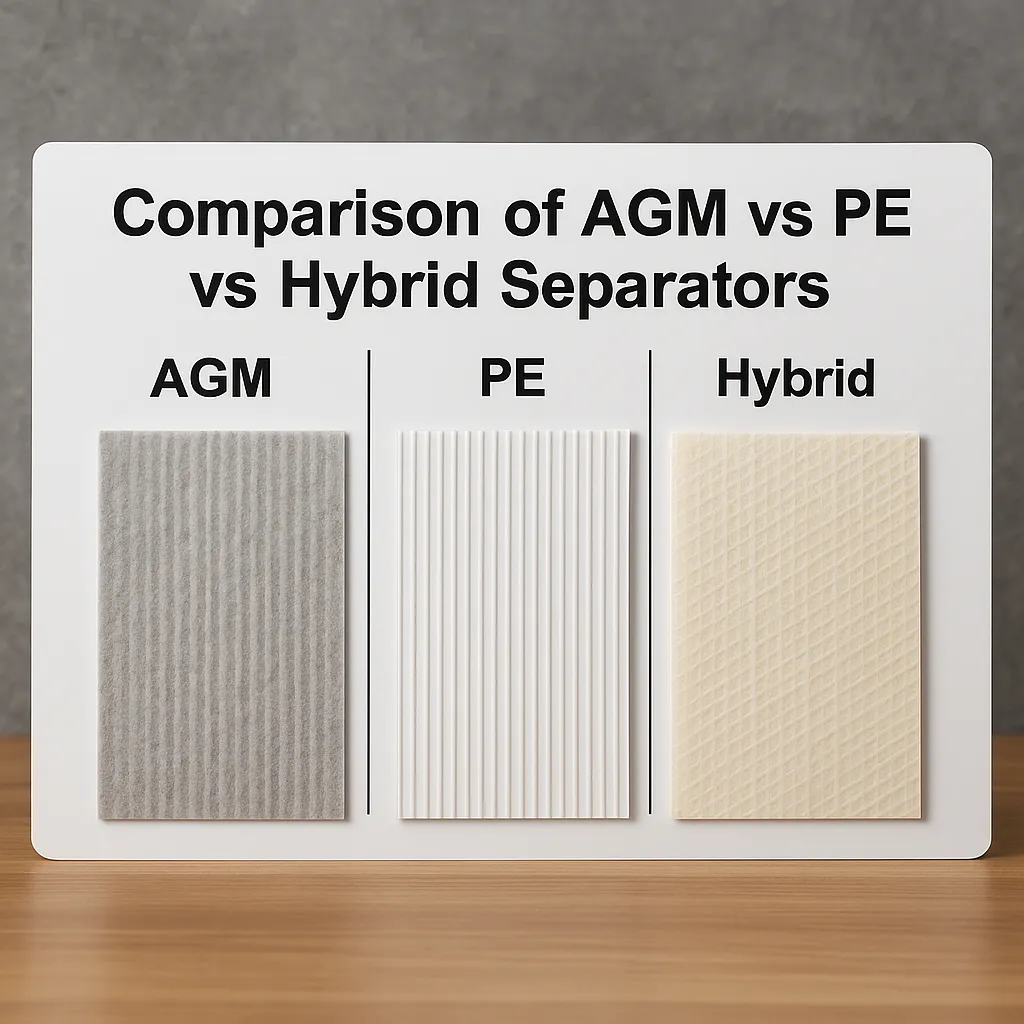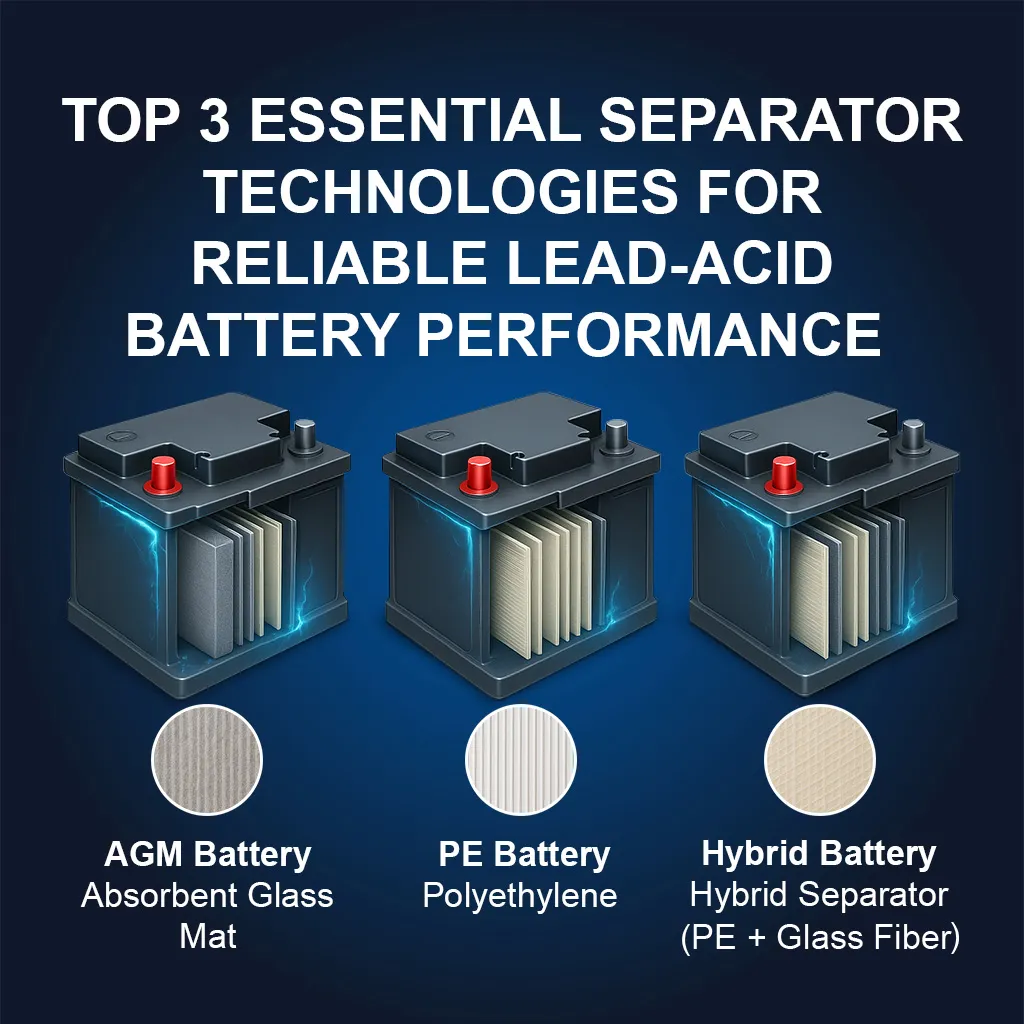Why Battery Separators Matter
Battery separators are critical yet often overlooked components in lead–acid batteries, directly impacting performance, safety, and longevity. Advanced separator technologies ensure reliable power for start–stop systems, hybrid vehicles, and electronics–heavy cars.
What Are Battery Separators?
Separators are porous membranes placed between a lead–acid battery’s positive and negative plates. Their key roles include:
- Preventing short circuits by separating electrodes.
- Enabling ion flow for electrochemical reactions.
- Retaining electrolyte for consistent battery performance.
Separators must be chemically stable, mechanically strong, and thermally resistant to handle high currents and rapid cycling.
Types of Battery Separator Technologies
Absorbent Glass Mat (AGM)
- Material: Fine fibreglass mats.
- Features: Absorbs electrolyte, offering high vibration resistance and charge efficiency.
- Best For: Valve–Regulated Lead–Acid (VRLA) batteries in start–stop and premium vehicles.
Polyethylene (PE)
- Material: Cost–effective thermoplastic.
- Features: Lightweight, chemically resistant, but limited thermal stability.
- Best For: Conventional flooded batteries in standard vehicles.
Hybrid Separators
- Material: Combines PE and fibreglass or synthetic fibres.
- Features: Balances water retention, durability, and performance.
- Best For: Enhanced Flooded Batteries (EFBs) in vehicles with frequent restarts.
Battery Separator Comparison
| Attribute | AGM | PE | Hybrid |
| Material | Fibreglass mat | Polyethylene plastic | PE + fibreglass |
| Electrolyte Retention | Very high | Low, allows flow | Moderate, balanced |
| Vibration Resistance | Excellent | Moderate | High |
| Thermal Tolerance | Good | Very good | Excellent |
| Best Use Case | Start–stop, deep–cycle | Standard vehicles | High–performance vehicles |

How Separators Impact Battery Performance
Separator technology influences:
- Longevity: AGM and hybrid separators reduce sulphation and electrolyte stratification.
- Cold–Cranking Power: AGM separators ensure reliable starts in cold conditions.
- Cycle Durability: Hybrid materials excel in start–stop and deep–cycle systems.
- Thermal Stability: AGM and hybrid separators resist heat–related degradation.
- Efficiency: Lower internal resistance improves recharge time and voltage stability.
Real–World Applications
Conventional Flooded Batteries
- Separators: PE.
- Use Case: Ideal for standard driving in moderate climates.
Enhanced Flooded Batteries (EFB)
- Separators: Hybrid.
- Use Case: Perfect for start–stop vehicles with frequent engine cycling.
AGM Batteries
- Separators: Absorbent Glass Mat.
- Use Case: Best for luxury vehicles, SUVs, and harsh climates with high accessory loads.
FAQs About Battery Separator Technology
Conclusion: Power Up with Advanced Separators
Separator technology is a cornerstone of lead–acid battery performance, ensuring reliability, safety, and longevity.
References
1. Pavlov, D. (2017). Lead-Acid Batteries: Science and Technology. Elsevier “Lead-Acid Batteries: Science and Technology” Elsevier Shop
2. Cattaneo, E., Riegel, B. (2025). Advanced Industrial Lead-Acid Batteries in Electrochemical Power Sources: Fundamentals, Systems, and Applications. Elsevier – Advanced Industrial Lead-Acid Batteries Elsevier – Advanced Industrial Lead-Acid Batteries Elsevier Shop

